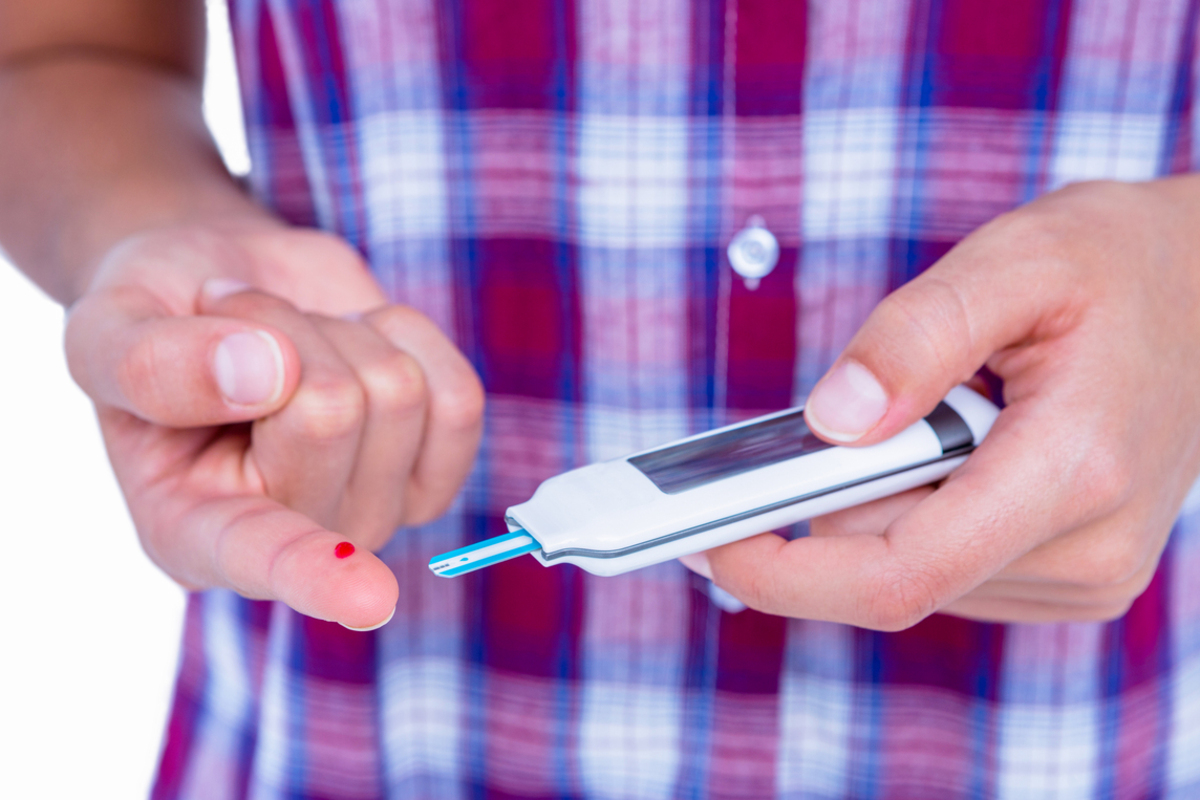Diabetes is a condition in which patients have high levels of glucose, a type of sugar, in the blood. Patients with diabetes are unable to metabolize glucose, which is the primary source of energy for cells. Therefore, cells are, in essence, starved.

Type 2 diabetes: Causes and risk factors
Type 2 diabetes develops because the cells of your body are no longer responsive to insulin, a hormone that is produced by the pancreas and is vital for helping metabolize glucose. When patients initially develop type 2 diabetes, the pancreas responds by making even more insulin to compensate for the lack of glucose metabolism. Unfortunately, this does not work and the blood glucose levels remain high.
Hence, while people with type 2 diabetes make insulin, the problem stems from the issue that cells are no longer responsive to insulin. This is why insulin resistance is the major characteristic of this disease. While we are not sure exactly why type 2 diabetes develops, studies have shown that a mixture of genetics and environmental factors is responsible.
A combination of different things comes together to cause type 2 diabetes. The causes and risk factors for type 2 diabetes include:
- Genetics. There is evidence that some genes predispose you to type 2 diabetes by regulating your sensitivity to insulin.
- Metabolic syndrome. Patients with metabolic syndrome are at a higher risk of developing type 2 diabetes. Metabolic syndrome refers to a group of conditions that include high blood pressure, high cholesterol, high fat levels in blood, and fat distribution around your waist.
- Weight. Overweight and obese people are more likely to develop type 2 diabetes as extra fat cells release certain chemicals associated with insulin resistance.
- High waist circumference. Patients who have most of their fat distribution around their waist have higher levels of visceral fat (fat around organs), which is extremely dangerous and increases your risk of developing type 2 diabetes.
- Age. People older than 45 are more likely to develop type 2 diabetes.
- Unhealthy diet. People whose diets are high in sugar and processed foods are more likely to develop type 2 diabetes.
- Sedentary lifestyle. People who don’t exercise regularly are at a higher risk for developing type 2 diabetes compared to active people.
- Family history. People who have a family member with type 2 diabetes are more likely to develop the disease.
- Ethnicity. People of certain ethnicities, such as African-American, Hispanic/Latino, Native America, Asian and South Asian are more likely to develop type 2 diabetes.
- Comorbidities. There are several other diseases that are connected to type 2 diabetes and increase a person’s likelihood of developing the disease. Patients who have or have had prediabetes, heart disease, high blood pressure, high cholesterol, obesity, and gestational diabetes are more likely to develop type 2 diabetes.
- Smoking. Smokers are twice as likely to develop type 2 diabetes compared to non-smokers
- Stress. Stress has been shown to be a big contributor to type 2 diabetes.
- Not getting enough sleep or getting too much sleep is another risk factor.
Symptoms of type 2 diabetes
Often, especially at the beginning, the symptoms of type 2 diabetes can be very mild. These are the symptoms that are associated with type 2 diabetes:
- Excessive thirst
- Excessive hunger
- Frequent urination
- Fatigued or tired
- Irritable
- Blurry or impaired vision
- Numbness or tingling
- Wounds or sores that don’t heal
- Yeast infections
Diagnosis: How can you find out if you have type 2 diabetes?
If your doctor suspects that you may have type 2 diabetes, then they can administer a number of different tests. These include:
- Hemoglobin A1c test. The A1c test is able to test your blood sugar levels over the course of the last 2-3 months.
- Fasting plasma glucose levels. This test requires withdrawing your blood after a night of fasting. It is done on an empty stomach so you shouldn’t eat or drink anything over the 8 hours before the test.
- Oral glucose tolerance test. This test is done in two steps. First, your blood sugar levels are checked before you drink a sugary drink and then two hours after. This test measures how well your body is able to handle sugar.
Treatment: How is type 2 diabetes managed?
Treatment for type 2 diabetes is heavily focused on making lifestyle changes. These include:
- Losing weight. Study have shown that dropping five to seven percent of your body weight can help normalize blood glucose levels.
- Starting exercising. Muscles use insulin. Thus, the more exercise you do, the better your insulin will work to metabolize glucose.
- Quitting smoking.
- Limiting your alcohol take.
- Taking medications, such as insulin, as prescribed and at proper times (such as before mealtime).
If you follow these guidelines, then you can prevent or delay the progression of type 2 diabetes. Meet with your doctor regularly to monitor any potential complications.
- Gæde, Peter, et al. "Effect of a multifactorial intervention on mortality in type 2 diabetes." New England Journal of Medicine 358.6 (2008): 580-591.
- American Diabetes Association. "Diagnosis and classification of diabetes mellitus." Diabetes care 33.Supplement 1 (2010): S62-S69.
- Tuomilehto, Jaakko, et al. "Prevention of type 2 diabetes mellitus by changes in lifestyle among subjects with impaired glucose tolerance." New England Journal of Medicine 344.18 (2001): 1343-1350.
- Photo courtesy of SteadyHealth


Your thoughts on this